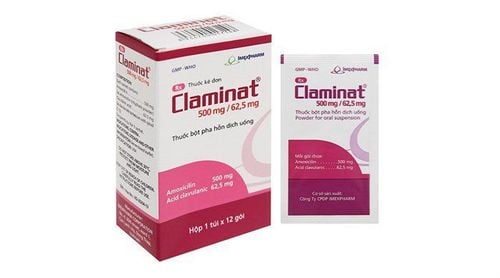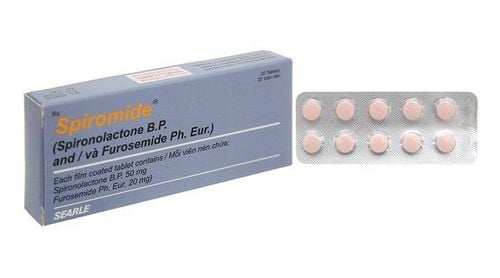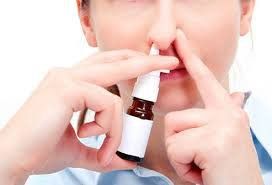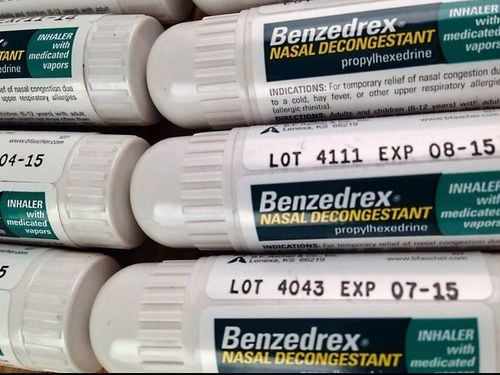This is an automatically translated article.
Stuffy nose, difficulty breathing in children is a common problem that makes mothers worry, especially when the weather changes and seasons change. Parents, let's learn to know and understand the methods of supporting treatment when children have a stuffy nose due to colds, flu, rhinitis, sore throat, ...
1. What drugs are used to relieve stuffy nose and shortness of breath in children?
Depending on the cause, the doctor or pharmacist will guide parents to use medicine to both treat the cause and relieve the symptoms of stuffy nose and shortness of breath in children. If irritation is the cause, a decongestant such as Oxymetazoline can help reduce swelling and relieve pain. If the stuffy nose and breathing difficulties in children are caused by allergies, anti-allergy medications such as antihistamines will help reduce swelling and clear up congestion.
MORE: What medicine should be used to end the stuffy and itchy nose in children?
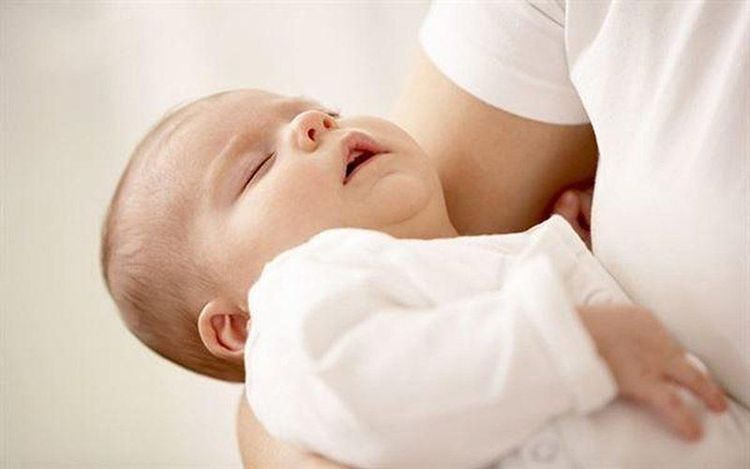
Thuốc Oxymetazoline có tác dụng điều trị ngạt thở, khó thở ở trẻ sơ sinh
2. How to reduce stuffy nose and breathing difficulties in children by non-drug measures?
Besides medication, there are many helpful measures parents can take to help children with stuffy nose feel more comfortable and sleep better quickly and effectively as follows2.1 Massage therapy
Massage is a simple way that can be applied immediately to relieve symptoms of stuffy nose, difficulty breathing in children. Some effective massage movements when a child has a stuffy nose include:
Gently massage the mid-eyebrow point for 1 minute to help prevent dryness of the nasal mucosa, and at the same time effectively adjust the pressure in the frontal sinuses and reduce stuffiness. nose, difficulty breathing in children. Rubbing the sides of the nose for 1 to 2 minutes can help open up the nasal passages, making it easier to blow your nose. Massage the point between the upper lip and the nose for 2 to 3 minutes to help reduce swelling of the capillaries in the nose, making the airways open and comfortable.
2.2 Rinse the nose with sterile water and use physiological nasal drops
To ensure effective nasal hygiene and washing, parents should use specialized tools to clean the nose, remove dirt, bacteria, viruses, relieve stuffy nose, breathing difficulty in children according to the following steps:
Have the child stand in front of the sink, place the nozzle of the nasal wash in one of their nostrils, pump and let the child tilt his or her head until water flows into one nostril and through the other. The other carries the mucus out. Do the same with the other nostril even if the child has a stuffy nose only on one side because the two sides of the nose connect through the sinuses. In addition, when children have a stuffy nose, parents should soon apply nasal drops with physiological saline to increase moisture in the sinuses, dilute mucus, easily blow their noses and reduce stuffy and difficult breathing in children.
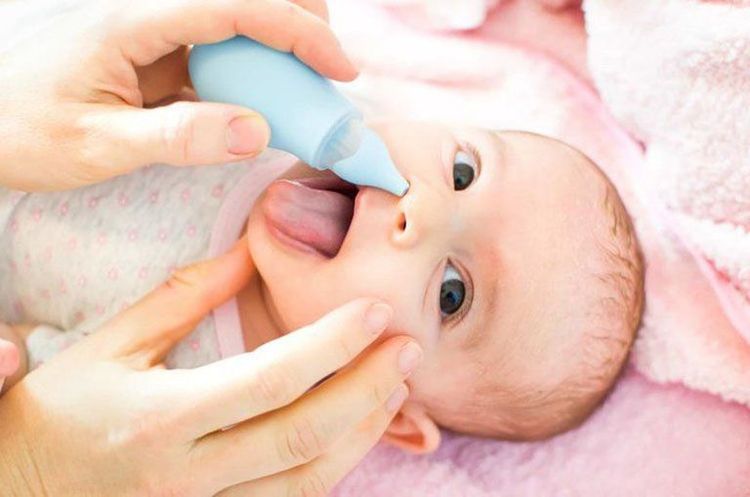
Nước muối sinh lý có tác dụng rửa sạch chất nhầy trong mũi trẻ
2.3 Take a warm bath, sauna, and use a humidifier
Warm baths have a lot of good effects, which can help improve stuffy nose, shortness of breath in children. The method is very simple: a child with a stuffy nose breathes in warm bath water to help loosen mucus in the nasal passages and reduce inflammation.
Similar to a warm bath, parents can also relieve stuffy nose and breathing difficulties in children by preparing and instructing children to perform a steam bath as follows:
Prepare a bowl of hot water, add essential oils lemongrass, melaleuca or lavender if available. Have the child sit on a chair next to the water bowl so that the distance between his face and the hot water bowl is not too close. Cover your head with a large towel so that the steam in the bowl rises up into your nose for about 10 minutes. Use nasal spray 2 to 3 times a week to treat stuffy nose and shortness of breath in children. With this measure, parents should monitor their children while steaming to prevent the risk of burns in children.
In addition, using a humidifier will help adjust the humidity in the air to the most reasonable level, thereby soothing irritated tissues; swollen blood vessels in the nose and sinuses, indirectly thinning the mucus in the nasal sinuses; help mucus drain out more easily; Support normal breathing of the nasal cavity, thereby improving symptoms of stuffy nose, difficulty breathing in children.
SEE ALSO: What to do when a baby has a stuffy nose?
2.4 Apply a warm towel or gauze
This is one of the ways to relieve stuffy nose and shortness of breath in children at home, which is often applied as an alternative to the steam method. Warm compresses on the nose will help children with stuffy nose feel more comfortable and comfortable, and also reduce inflammation in the nostrils. How to do this method is as follows:
Dip a clean towel (or gauze) into a bowl of hot water (can add lemongrass, orange, lavender essential oils), then wring the towel dry. Fold the towel in half and place it on the bridge of your nose. When the towel cools, dip it back into the hot water and repeat 3 to 4 times. Apply a towel every day, especially before the child goes to bed to improve the symptoms, and help the child with a stuffy nose to sleep more easily.
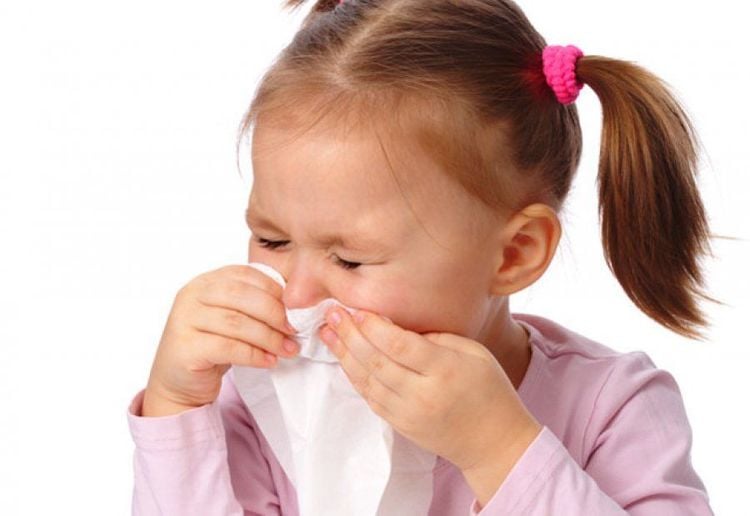
Chườm ấm mũi là một biện pháp giúp trẻ đỡ ngạt mũi
2.5 Drink lots of water, use ginger tea or honey lemon
Drinking enough water (can be water, fruit juice and vegetable juice) will thin the mucus in the nose, making it difficult to breathe in children with stuffy nose. At the same time, adding water also reduces pressure in the sinuses, helping to reduce inflammation, reduce nasal irritation.
Besides, using ginger to make tea can effectively cure stuffy nose and shortness of breath in children. Parents take fresh ginger, wash it, scrape it off and cut it into small pieces, then put it in a cup of hot water, wait for about 15 minutes until the water in the cup turns yellow. Besides, drinking hot lemon water mixed with honey is a very good way to relieve stuffy nose, shortness of breath in children.
Prolonged stuffy nose makes children often find it difficult to breathe. This long-term situation not only affects the health but also makes the child extremely uncomfortable. Parents can apply the above methods to reduce nasal congestion and breathing difficulties for children. However, if applying the above measures does not bring results, parents should soon take their children to medical centers for examination and treatment.
Pediatrics Department at Vinmec International General Hospital is the address for receiving and examining diseases that infants and young children are susceptible to: viral fever, bacterial fever, otitis media, bronchitis , pneumonia in children, ....With modern equipment, sterile space, minimizing the impact as well as the risk of disease spread. Along with that is the dedication from experienced doctors who specialize in pediatric patients, making the examination no longer a concern for parents.
Please dial HOTLINE for more information or register for an appointment HERE. Download MyVinmec app to make appointments faster and to manage your bookings easily.
Reference source: webmd.com




